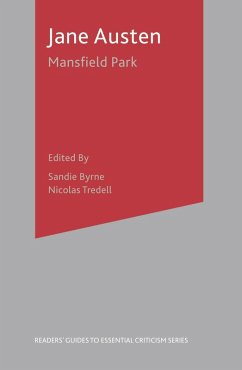The first novel of the author's maturity, Mansfield Park is complex, highly wrought, and experimental. It marks a transitional stage between the first two published novels, Sense and Sensibility and Pride and Prejudice, and Jane Austen's greatest achievements, Emma and Persuasion. It has been suggested that Mansfield Park is the writer's most autobiographical novel and that, in seeing through the eyes of Fanny Price, deemed the most moralising and judgemental of her heroines, we are seeing through the eyes of Austen herself. Though Fanny Price may be too virtuous for modern readers to take to their hearts, in Mrs Norris Austen creates one of her best, because most plausible, monsters; while in the estate of Mansfield Park itself we find some of the most fully realised descriptions of domestic interiors and exteriors in Austen's fiction.
This Guide traces the response to Mansfield Park from the opinions of Jane Austen's contemporaries, through 19th century reviews and 20th century critical analyses, including deconstructionist, feminist, postcolonial and poststructuralist, to diverse 21st century approaches to the novel. Sandie Byrne selects the most useful and insightful of these responses and puts them in context, providing the reader with an essential and approachable introduction to the range of critical debate on this important novel.
This Guide traces the response to Mansfield Park from the opinions of Jane Austen's contemporaries, through 19th century reviews and 20th century critical analyses, including deconstructionist, feminist, postcolonial and poststructuralist, to diverse 21st century approaches to the novel. Sandie Byrne selects the most useful and insightful of these responses and puts them in context, providing the reader with an essential and approachable introduction to the range of critical debate on this important novel.


